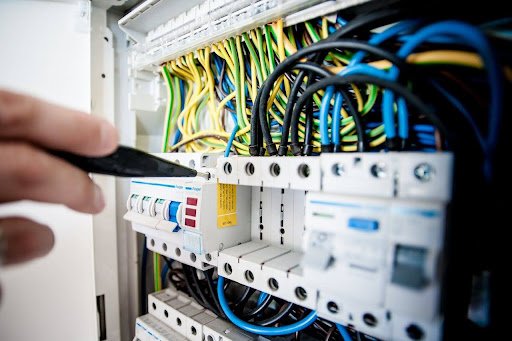It’s a real pain when an electrical outlet suddenly stops working, isn’t it? Whether it’s your phone charger, a coffee machine, or an essential appliance, a non-functioning outlet can disrupt comfort, safety, and productivity.
The good news is that most of the time, there’s a simple explanation and often, an easy fix. Knowing what might be going on can help you decide if it’s a DIY job or if you need to call in a professional electrician. In this article, let’s see the most common reasons outlets fail and give you some practical, safe troubleshooting tips.
Tripped Circuit Breaker
One of the most common reasons an outlet isn’t working is a tripped circuit breaker. Your home’s electrical system is divided into circuits controlled by breakers that automatically shut off if the circuit becomes overloaded. When too many devices are plugged in or a short circuit occurs, the breaker trips to prevent electrical fires.
Solution: Check your electrical panel for any switches that are in the “off” or neutral position. If you find one, flip it all the way to “off” and then back to “on”. After resetting, check the outlet again. If it works, you’ve found the problem. However, if the breaker keeps tripping repeatedly, there may be a deeper wiring issue that needs professional attention.
Blown GFCI Outlet
Ground Fault Circuit Interrupter (GFCI) outlets are designed to shut off power when they detect electrical imbalances, such as moisture intrusion or current leaks, especially important in kitchens, bathrooms, and outdoor areas. Sometimes, a tripped GFCI can affect multiple outlets on the same circuit, even in other rooms.
Solution: Look for any GFCI outlets nearby and press the “reset” button. If resetting the GFCI restores power to the non-working outlet, the issue was likely due to a detected imbalance. If the GFCI won’t reset or trips again quickly, consult a professional like Sherwin Electrical to inspect for hidden faults.
Loose or Damaged Wiring
Loose connections or deteriorating wires behind the outlet can prevent electricity from flowing. Over time, wires can become worn or corroded, especially in older buildings. It’s a safety hazard that can lead to electrical fires.
Solution: If you feel comfortable turning off power at the breaker and removing the outlet cover, you can inspect for any loose wires. However, this kind of repair should ideally be handled by a licensed electrician.
Faulty Outlet
Sometimes, the outlet itself is simply defective or worn out. Constant plugging and unplugging can wear down internal components, eventually causing failure. Older outlets are especially prone to malfunction due to wear, corrosion, or heat damage.
Solution: If you’ve confirmed the circuit is active and there’s no GFCI issue, but the outlet still doesn’t deliver power, it may be time to replace it.
Burned or Scorched Outlet
Outlets that are blackened, melted, or emit a burning smell indicate overheating, usually from faulty wiring or an overloaded circuit.
Solution: Immediately stop using the outlet and cut off power at the breaker. Call an electrician to evaluate the problem. In such cases, prompt intervention can prevent a dangerous situation from escalating.
Backstabbed Wires
In some cases, wires may have been “backstabbed” during installation meaning they were pushed into the holes in the back of the outlet instead of being secured under the screws.
Solution: An electrician can remove the outlet and re-secure the wires properly under the terminal screws. Rewiring in this manner ensures a more stable and long-lasting connection.
Endnote
An outlet that stops working might seem like a minor inconvenience, but it can often point to bigger electrical issues. By understanding common causes you can better assess the situation and decide whether it’s a DIY fix or a job for the professionals. Don’t ignore non-functioning outlets. Addressing them early can prevent more serious problems down the line and keep your space powered, safe, and efficient.
